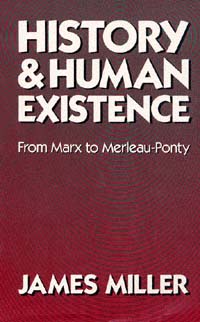Georg Lukacs:
The Reification of Subjectivity
The Russian Revolution transformed the practical context of Marxian theory. Socialism no longer appeared a distant goal; militant action no longer seemed futile; the gloomy urgency of Rosa Luxemburg's wartime essays was replaced by a new spirit of combative optimism. With the end of the war and the collapse of social order in Germany and Hungary, a fluid historical situation emerged, fostering apocalyptic hopes. Revolutionaries could believe in the "imminence of world revolution and the total transformation of the civilized world," as Georg Lukács has recalled.[10] The example of Lenin himself fueled such hopes. Against Marxist gradualism, with its cautious evolutionary positivism, Lenin epitomized the primacy of human action; this radical figure who had seized history by the reins attracted a new stratum of Western intellectuals to Marxism. Such communists as Lukács, Antonio Gramsci, and Karl Korsch brought to Marxism a fresh set of theoretical perspectives, coupled with an activist orientation.
The subjective and spiritual dimensions of Marxism slighted by orthodoxy were suddenly revived. Theorists expressed renewed interest in the nature of class consciousness and a refurbished faith in the revolutionary capabilities inherent in the proletariat. Events now suggested that Marx's original prognosis of proletarian militancy was not wholly mistaken. Socialism could appear plausibly as the inevitable rational goal of modern history: not coincidentally, the Marxist revival coincided with a Hegelian revival in several theoretical circles.
Lukács, a thinker influenced by Max Weber and Georg Simmel as well as Hegel, stands at the beginning of the contemporary renaissance of Marxist philosophical studies. In The Theory of the Novel , his last major pre-Marxist work, Lukács had described the modern era as "an age in which the extensive totality of life is no longer given, in which the immanence of meaning in life has become a problem, yet which still thinks in terms of totality."[11] When Lukács transported this aesthetic yearning for wholeness into Marxism, he resurrected Marx's own hopes for a qualitatively new form of life.
He also briefly resurrected Marx's rationalist optimism, a rebirth vividly conveyed in his first Marxist essays, collected in Tactics and Ethics and published in 1919. The messianic significance of the Russian Revolution decisively colored his prose: "The message of reality," exclaimed Lukács, "Marxist reality, the unity of the historical process, is quite clear: the revolution is here ." The imminence of revolution invested the situation of the proletariat with an extraordinary moral urgency. Every proletarian, he asserted, was impelled to attain a clear sense of his true class interest, which necessarily surpassed the "merely given" to comprehend a "world-historical mission." While only Marxism could provide "intellectual leadership" in this ongoing process "of making social development conscious," the inner essence and momentum of history seemed relatively unambiguous: for Marx had properly perceived world history "as a homogenous process, as an uninterrupted revolutionary process of liberation."[12]
The temper of these essays was impatient, impetuous, demanding, of a piece with a romantic reading of Lenin's accomplishment: "Decisions, real decisions, precede the facts ." One telling indicator of Lukács's optimism at this stage was his doctrine of the party. After describing orthodox socialist parties as the "external organizational expression" of the proletariat's immaturity, its "inability to impose its will and its interests on society," he proceeded to praise the Bolsheviks for dismantling the traditional party organization, and enabling "the proletariat to take all power into its own hands. . . . The parties have ceased to exist—now there is a unified proletariat ".[13]
The illusion of a revolution without political parties quickly dissipated, however: rationalist optimism gave way to rationalist pessimism. Under the impact of revolutionary setbacks in Hungary and Italy in 1919, and confronted with Lenin's critique of his position as "ultra-Leftist" in 1920, he was driven to reformulate his outlook and specifically to reconsider his position on the party. By 1923, when History and Class Consciousness was published, additional reasons for a reassessment could be found in Lukács's own theory of reification. The importance of this book was twofold. Not only did he analyze the formation and function of class consciousness, he also sharply posed the problems involved in liberating men from fixed and falsifying forms of thought. The rationality of the proletariat—its understanding of its "world-historical mission"—could no longer be taken for granted as an emergent result of historical development.
His theory of reification took as its starting point Marx's discussion in Capital of commodity fetishism. The development of capitalist society had created "the fetishistic character of economic forms, the reification of all human relations, the constant expansion and extension of the division of labor which subjects the process of production to an abstract, rational analysis, without regard to the human potentialities and abilities of the immediate producers; all these things transform the phenomena of society and, with them, the way in which they are perceived."[14] Under the reign of capital, society was mobilized for the accumulation of surplus value, rather than the cultivation of human capacities—an omission which took its toll on the victims of the system and their understanding of their situation. Here Lukács invoked Max Weber as well as Karl Marx: within modern society, most men had become prisoners of bureaucratic routine and instrumental manipulation, creatures of closed categories. The reification represented in commodity exchange thus infected the subjects of exchange: the worker, enmeshed in unthinking activities overseen by the capitalist, was in thrall to bourgeois forms of thought.
For Lukács, as for Marx, the individual in a commodity form of exchange was immediately confronted with a "fantastic relation between things," rather than the actual relation between men which produced this appearance. One of Marx's main tasks in Capital had been the penetration of appearances such as the "free exchange" of wages for labor power to reveal the exploitative logic of capital. He also seemed to follow Marx in deriving fetishistic forms "from the primary forms of human relations."[15] But he refused to join Marx in premising theory on the concrete activity of real individuals. Instead, he asserted that "no path leads from the individual to the totality."[16]
Indeed, by 1923 Lukács felt that the prevalent reification of bourgeois society had prevented most individual workers from acquiring a "true, concrete self-knowledge of man as a social being ." The categories of bourgeois consciousness presented, not the reality of domination, but the unreflected appearance of free exchange. Marxist theory thus decisively outstripped proletarian practice: "We must never overlook the distance that separates the consciousness of even the most revolutionary worker from the authentic class consciousness of the proletariat."[17] Lukács thus reserved the possibility of true consciousness for classes alone; only a class as a whole could attain a "total point of view," and grasp the essential social relations. Sundered from Marx's original premise of individuals producing in society, and questioning the capacity of even the most enlightened individual workers for self-emancipation, his theory proceeded to present modern history as an ongoing struggle, not between interested individuals involved in antagonistic class relations, but between two conceptual entities, the proletariat and the bourgeoisie.
The conceptual proletariat, catalyzed by a true class consciousness, became the general subject of a true history in his eyes. But the empirical proletarians did not immediately coincide with their conceptual essence—a situation which only the enlightened efforts of the Communist Party could rectify. He thus assigned to the party the sublime role of bearing the authentic class consciousness of the proletariat, the "consciousness of its historic vocation," although he departed from Leninist orthodoxy by emphasizing the cultural and pedagogical aspects of the party's mission.[18] Nevertheless, for Lukács as for Lenin the concrete subjects of history—these particular proletarians—were deemed incapable of educating themselves, of acquiring a proper grasp of the social totality. Like the Great Legislator in Rousseau, the party in Lukács appeared a slightly fabulous creature—as if only the gnosis of the party's illuminati, by divining the "final goal," could rescue workers from the falsifying forms of thought typical of bourgeois society. Moreover, since Lukács tended to portray the subject of history ideally, as a collective "we," the individual workers threatened to become relatively inconsequential elements in a rigidly teleological movement governed by the party's interpretation of history and its "objective possibilities." Perhaps this is the real meaning of Lukács's remark that reification "over-individualizes" men: the quest for a unified totality here led, first, to the abandonment of real individuals as an ontological premise of theory, and then to an attenuation of individuation as a goal of communism.[19]
But these were not the critical aspects of his contribution. Instead, subsequent Marxists fastened on his understanding of class consciousness, and his insights, however problematically linked to a defense of the Leninist party, into the importance of a materialist pedagogy able to raise interests to the level of rational action. As the foremost philosopher of a genuinely dialectical theory of history, Lukács stimulated a new concern with the subjective aspects of Marxist theory, while redirecting attention to the human basis of revolutionary practice. If his own theory in History and Class Consciousness veered toward conceptual rigidity, perhaps this was but a by-product of his steadfast adherence to Marx's original rationalist hopes in an increasingly unpromising situation.
 | From Marx to Merleau-PontyJames MillerUNIVERSITY OF CALIFORNIA PRESSBerkeley · Los Angeles · Oxford© 1982 |




